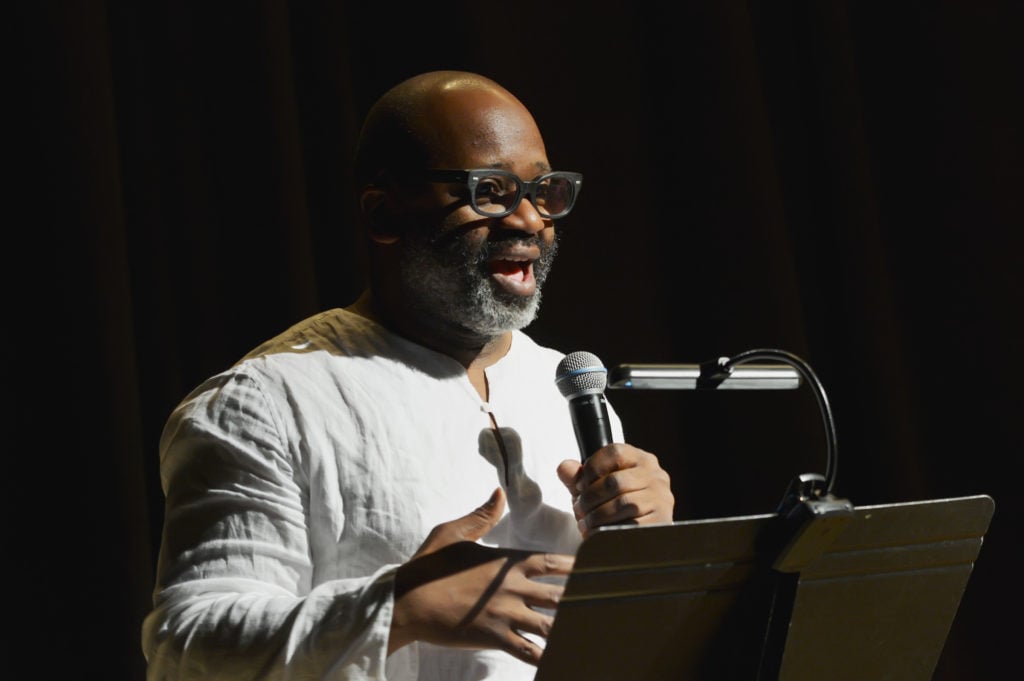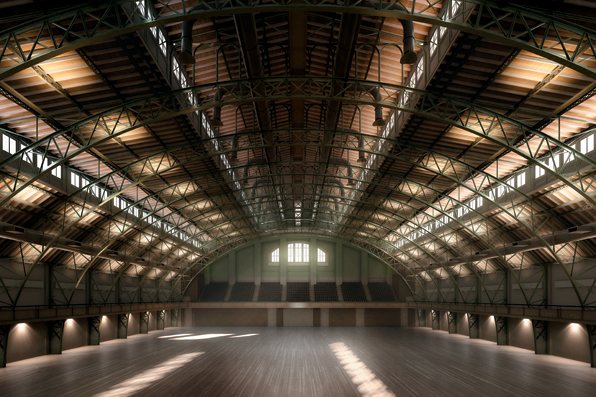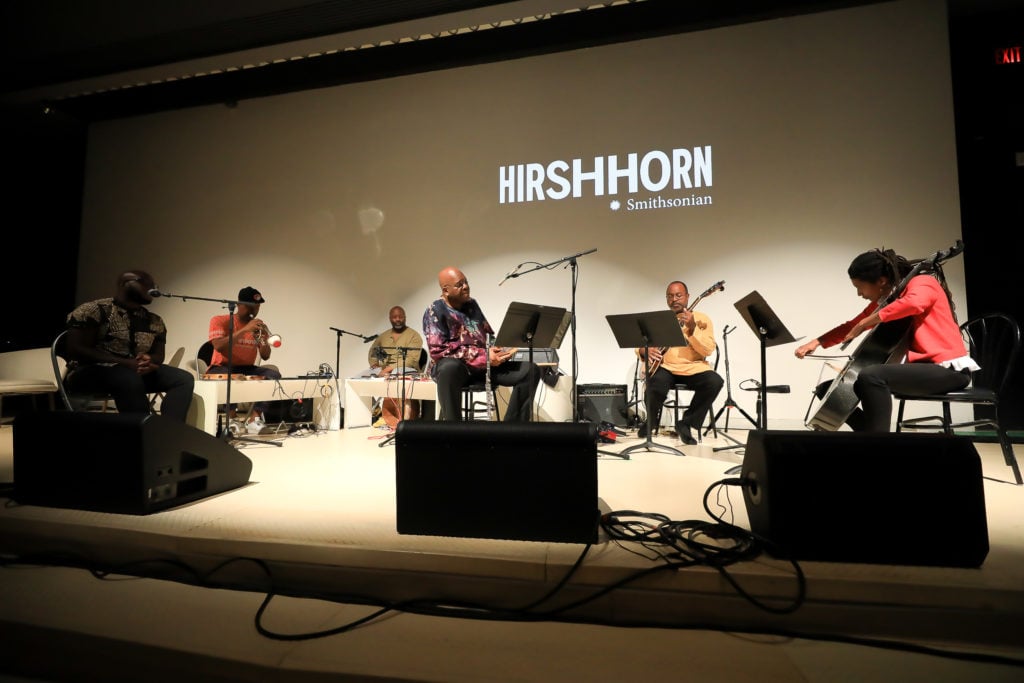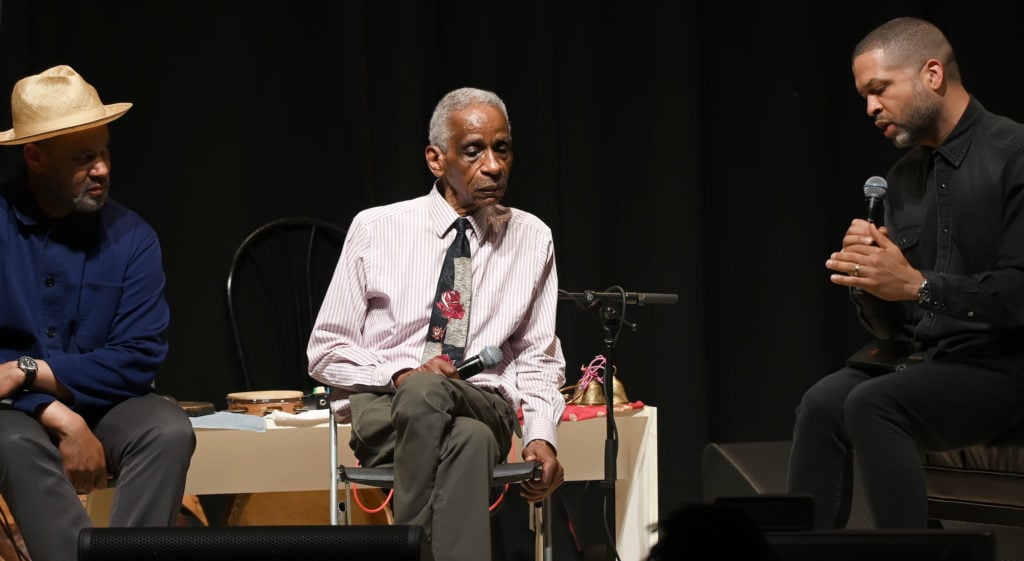Art & Exhibitions
‘It’s True Musical Abstraction’: Artist Theaster Gates on His Plan to Break New Barriers in Sound Art at the Park Avenue Armory
The artist will lead his Black Artists Retreat at the Park Avenue Armory's Drill Hall in October.

The artist will lead his Black Artists Retreat at the Park Avenue Armory's Drill Hall in October.

This time last year, the Park Avenue Armory’s Drill Hall, one of the largest columnless spaces in New York City, desperately needed a new floor. Many of the 138-year-old wooden boards were cracked or crumbling; the support structure underneath was deteriorating. So the non-profit body in charge of the space, the Park Avenue Armory Conservancy, secured $4 million in funds (half of which came from the city) to rebuild it.
That’s when Theaster Gates stepped in. He was already in talks with the Armory to do an ambitious project there this year, so he offered to source and mill some of the rare, recycled Georgia yellow pine for the reconstruction through his urban renewal project in Chicago, the Rebuild Foundation.
Now, over the course of a weekend this October, Gates will get to see the foundation’s efforts in action when he mounts the newest iteration of his Black Artists Retreat at the Drill Hall. A protean gathering of black artists, academics, curators, and other creators, the retreat was founded by Gates and fellow Chicago-based artist Eliza Myrie, and held annually in their hometown between 2013 and 2016. This year’s version, the first held outside of Chicago, will explore the way artists use, interact with, and understand sound.

Inside the Park Avenue Armory. Courtesy of the Park Avenue Armory.
The artist will open up the hall for dancing, musical performances, public discussions, and rolling skating on the new floor. Participants will navigate an installation of Gate’s signature “housebergs”—seven-foot-tall disco balls in the shape of icebergs.
Gates has long been interested in music and its formal conventions—or, as he might see them, constraints—especially when it comes to black culture. “There’s a spiritual undertone to lots of different kinds of music that are produced by black people,” he tells artnet News. “If we were really to give time to it, we would explode the categories of jazz and R&B and hip-hop. We’d find that many artists are actually working within this other zone of music that has no name.”

Saïs Kamalidiin (third from right), Leonard Brown (second from right), and Tomeka Reid (far right) with Theaster Gates (third from left) and the Black Monks at Discussions of the Sonic Imagination, Part I, 2019, at the Hirshhorn Museum and Sculpture Garden. Photo by Tony Powell.
That zone is what interests him most. It was the inspiration for Processions (2016-19), a series of collaborative performances held in four parts at the Hirshhorn Museum in Washington, DC, that looked at linkages between African and African American musical traditions.
The fourth and final iteration of Processions, which Gates called a precursor to the Armory presentation planned for later this year, was held at the Hirshhorn earlier this month. The performance brought together musicians such as the pianist (and artist) Jason Moran, singer Jessica Boykin-Settles, and saxophonist Roscoe Mitchell to participate in a conversation—part musical exchange, part dialogue—about the function of sound versus music.

Mike Reed (left) and Roscoe Mitchell (center) in conversation with Jason Moran (right) in Discussions of the Sonic Imagination, Part II, 2019, at the Hirshhorn Museum and Sculpture Garden. Photo by Shannon Finney.
“Is it possible that by talking about sound and noise in new ways that we might give musicians more permission to do naughty things with their objects that make noise,” says Gates, alluding to some of the territory explored in the program. “Take a classical musician or a jazz musician—it’s not that they don’t have the ability to make other sounds, it’s often that no one has given them permission or a platform to experiment with them.”
These sounds could be the awkward ones made when learning an instrument, or experimental ones that come alone during practice. “The sounds that are accidental or seemingly un-notable—they can be transcribed,” he says. “That’s when you get into this other territory of emotion and form that is very, very exciting to me. What I like about organized noise is that it frees you up from playing a song, from having to stick to predetermine notes. It’s true musical abstraction.”
Black Artists Retreat 2019: Sonic Imagination will take place October 11–12, 2019 at the Park Avenue Armory.